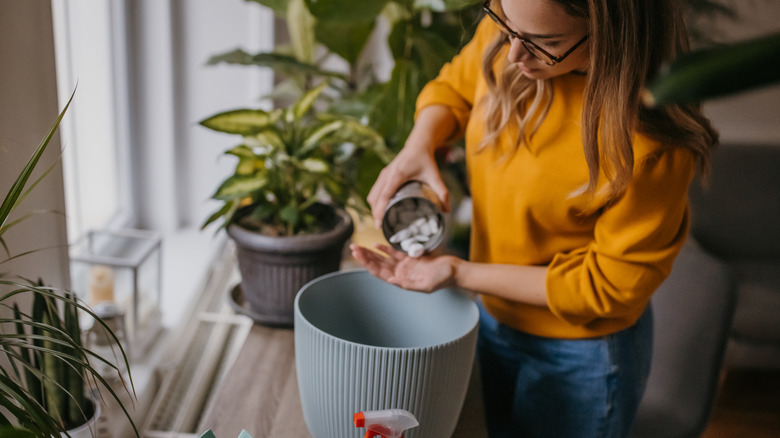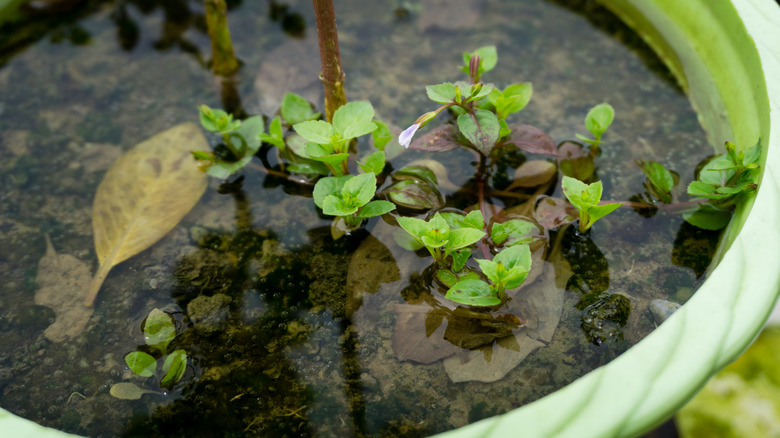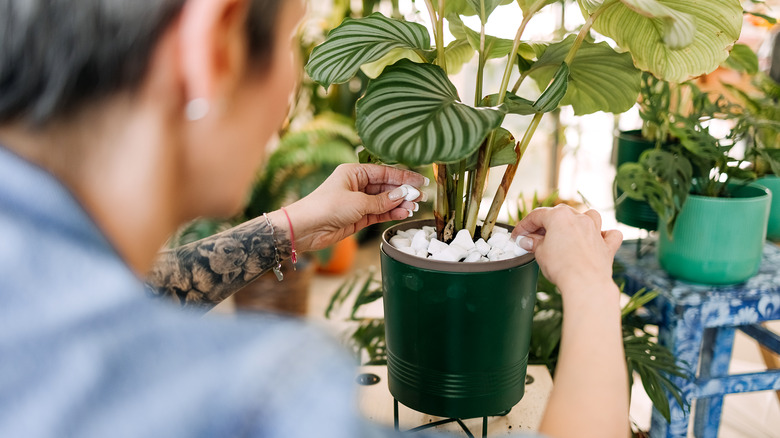Think Twice Before Adding Rocks And Gravel To The Bottom Of Your Planters
Home gardeners often go to great lengths to ensure proper drainage for optimal plant health and longevity. Some popular practices are choosing the right pot size with adequate draining holes, timely modifying the potting mix, and adding organic materials to the container plant's soil. However, lately, many gardeners have been promoting the insertion of an additional layer of pebbles, gravel, and rocks below the plant's soil to improve its drainage further, but you should think twice before trying that method.
Unless you have an aquatic plant at hand, plants generally dislike staying in a waterlogged bathtub-like situation caused by the added gravel layer. Instead of preventing the soil from becoming fully saturated by allowing for higher water flow, the rock layer forces the plant's roots to stay in water for longer, leading to rotting and damage. This means gravel not only fails at improving drainage but also causes further harm to your plants. But the story doesn't end here.
Pitfalls of adding gravel
The truth is water does not travel well from the potting medium down to the coarse gravel layer, given the medium's sponge-like moisture retention properties. It causes the water to perch just above the rock layer until the soil is completely soaked, a phenomenon commonly known as the perched water table, as N.C. Cooperative Extension explains.
Moreover, the additional pebble layer reduces the potting mix's volume, pushing the water table level even higher. This forces the plant's roots to develop wet feet by drowning them in excessive water, increasing the likelihood of root damage. Further, the moisture buildup limits the potted soil's airflow, leading to fungal growth and the demise of the plant.
Besides, with less room for the potting medium, the plant's roots are further limited in their volume expansion, stressing them out and permanently impairing their health, growth, and drought tolerance levels. In some cases, rocks may even turn the plant's environment alkaline, which is unsuitable for the majority of plants, as they thrive in neutral or nearly acidic soils, further delaying nutrient uptake and plant development.
Ways to improve drainage in planters
With rocks and gravel out of the picture, how can you improve your planter's soil aeration and water drainage? The easiest way is to improve the potting medium itself by including elements that enhance air space, such as perlite and vermiculite. These soil amendments are very porous and expand when exposed to heat, enabling better water flow, reducing perched water table levels, and enhancing nutrient uptake.
Adding organic materials like dead leaves, compost, and peat moss can also enhance water drainage. Another alternative is to periodically repot your plants, especially when they are still growing, as the size of the pot significantly impacts the balance between aeration and water retention. As for the rocks, you can move them to the top of the soil or potting mix to help your plants retain moisture and keep your pets from digging out your precious plants while adding an aesthetic touch.


